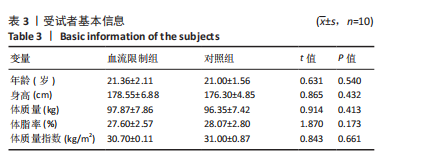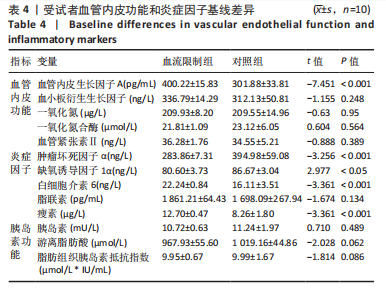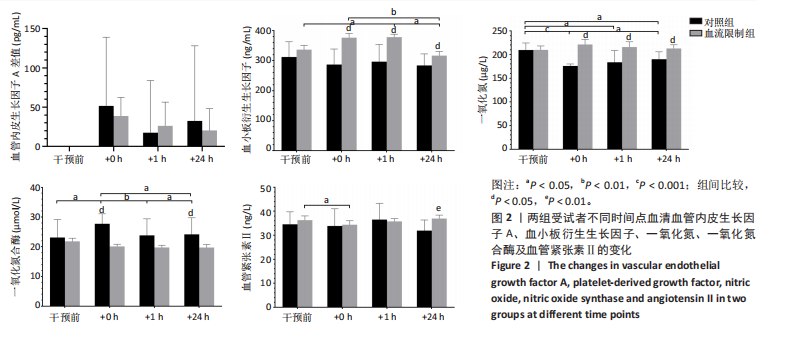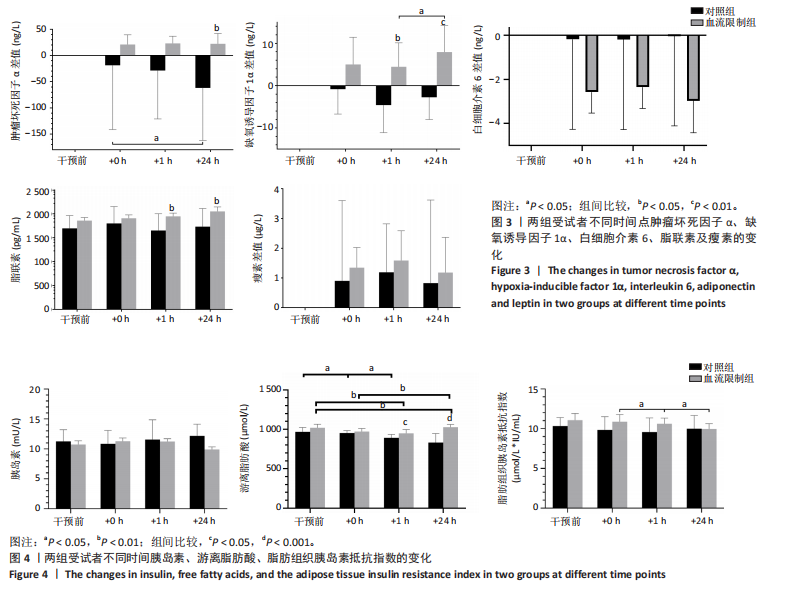[1] ABDELAAL M, LE ROUX CW, DOCHERTY NG. Morbidity and mortality associated with obesity. Ann Transl Med. 2017;5(7):161.
[2] CHEN K, SHEN Z, GU W, et al. Prevalence of obesity and associated complications in China: A cross-sectional, real-world study in 15.8 million adults. Diabetes Obes Metab. 2023;25(11):3390-3399.
[3] RODRÍGUEZ-HERNÁNDEZ H, SIMENTAL-MENDÍA LE, RODRÍGUEZ-RAMÍREZ G, et al. Obesity and inflammation: epidemiology, risk factors, and markers of inflammation. Int J Endocrinol. 2013;2013:678159.
[4] GIANOPOULOS I, MANTZOROS CS, DASKALOPOULOU SS. Adiponectin and Adiponectin Receptors in Atherosclerosis. Endocr Rev. 2025;46(1):
1-25.
[5] BRAGA TIBAES JR, BARRETO SILVA MI, WOLLIN B, et al. Sex differences in systemic inflammation and immune function in diet-induced obesity rodent models: A systematic review. Obes Rev. 2024;25(3):e13665.
[6] GESTA S, TSENG YH, KAHN CR. Developmental origin of fat: tracking obesity to its source. Cell. 2007;131(2):242-256.
[7] GREENBERG AS, OBIN MS. Obesity and the role of adipose tissue in inflammation and metabolism. Am J Clin Nutr. 2006;83(2):461S-465S.
[8] DUDLEY AC, GRIFFIOEN AW. Pathological angiogenesis: mechanisms and therapeutic strategies. Angiogenesis. 2023;26(3):313-347.
[9] DHANANJAYAN R, KOUNDINYA KSS, MALATI T, et al. Endothelial Dysfunction in Type 2 Diabetes Mellitus. Indian J Clin Biochem. 2016; 31(4):372-379.
[10] BULLÓ M, GARCÍA-LORDA P, MEGIAS I, et al. Systemic inflammation, adipose tissue tumor necrosis factor, and leptin expression. Obes Res. 2003;11(4):525-531.
[11] HOTAMISLIGIL GS, SHARGILL NS, SPIEGELMAN BM. Adipose expression of tumor necrosis factor-alpha: direct role in obesity-linked insulin resistance. Science. 1993;259(5091):87-91.
[12] AGHAMOHAMMADZADEH R, GREENSTEIN AS, YADAV R, et al. J Am Coll Cardiol. 2013;62(2):128-135.
[13] ANTONIADES C, TOUSOULIS D, VAVLUKIS M, et al. Perivascular adipose tissue as a source of therapeutic targets and clinical biomarkers. Eur Heart J. 2023;44(38):3827-3844.
[14] STRASSER B, ARVANDI M, SIEBERT U. Resistance training, visceral obesity and inflammatory response: a review of the evidence.Obes Rev. 2012;13(7):578-591.
[15] STRASSER B, SIEBERT U, SCHOBERSBERGER W. Resistance Training in the Treatment of the Metabolic Syndrome. Sports Med. 2010;40(5):
397-415.
[16] DIAS I, FARINATTI P, DE SOUZA MG, et al. Effects of Resistance Training on Obese Adolescents. Med Sci Sports Exerc. 2015;47(12):2636-2644.
[17] GONZALES JU,THOMPSON BC, THISTLETHWAITE JR, et al.Association between exercise hemodynamics and changes in local vascular function following acute exercise. Appl Physiol Nutr Metab. 2011;36(1):137-144.
[18] GOTO K, ISHII N, KIZUKA T, et al. Hormonal and metabolic responses to slow movement resistance exercise with different durations of concentric and eccentric actions. Eur J Appl Physiol. 2009;106(5):731-739.
[19] TANIMOTO M, ISHII N. Effects of low-intensity resistance exercise with slow movement and tonic force generation on muscular function in young men. J Appl Physiol (1985). 2006;100(4):1150-1157.
[20] AU JS, OIKAWA SY, MORTON RW, et al. Arterial Stiffness Is Reduced Regardless of Resistance Training Load in Young Men. Med Sci Sports Exerc. 2017;49(2):342-348.
[21] SHIMIZU R, HOTTA K, YAMAMOTO S, et al. Low-intensity resistance training with blood flow restriction improves vascular endothelial function and peripheral blood circulation in healthy elderly people. Eur J Appl Physiol. 2016;116(4):749-757.
[22] LARKIN KA, MACNEIL RG, DIRAIN M, et al. Blood Flow Restriction Enhances Post–Resistance Exercise Angiogenic Gene Expression.Med Sci Sports Exerc. 2012;44(11):2077-2083.
[23] YANG Y, WANG D, ZHANG C, et al. Piezo1 mediates endothelial atherogenic inflammatory responses via regulation of YAP/TAZ activation. Hum Cell. 2022;35(1):51-62.
[24] ALBARRÁN-JUÁREZ J, IRING A, WANG S, et al. Piezo1 and Gq/G11 promote endothelial inflammation depending on flow pattern and integrin activation. J Exp Med. 2018;215(10):2655-2672.
[25] 时文霞, 谢军, 何玉凤, 等. 血管内皮功能障碍运动干预的血流剪切力作用机制研究进展[J]. 中国体育科技,2024,60(3):51-64.
[26] LV Y, KIM K, SHENG Y, et al. YAP Controls Endothelial Activation and Vascular Inflammation Through TRAF6. Circ Res. 2018;123(1):43-56.
[27] [No authors listed]. Physical status: the use and interpretation of anthropometry. Report of a WHO Expert Committee. World Health Organ Tech Rep Ser. 1995;854:1-452.
[28] BOK D, RAKOVAC M, FOSTER C. An Examination and Critique of Subjective Methods to Determine Exercise Intensity: The Talk Test, Feeling Scale, and Rating of Perceived Exertion. Sports Med. 2022; 52(9):2085-2109.
[29] GARBER CE, BLISSMER B, DESCHENES MR, et al. American College of Sports Medicine position stand. Quantity and quality of exercise for developing and maintaining cardiorespiratory, musculoskeletal, and neuromotor fitness in apparently healthy adults: guidance for prescribing exercise]. Med Sci Sports Exerc. 2011;43(7):1334-1359.
[30] HASS CJ, FEIGENBAUM MS, FRANKLIN BA.Prescription of resistance training for healthy populations. Sports Med. 2001;31(14):953-964.
[31] GRAY SM, CUOMO AM, PROPPE CE, et al. Effects of Sex and Cuff Pressure on Physiological Responses during Blood Flow Restriction Resistance Exercise in Young Adults. Med Sci Sports Exerc. 2023;55(5): 920-931.
[32] 魏佳, 李博, 冯连世, 等. 血流限制训练的方法学因素及潜在安全性问题[J].中国体育科技,2019,55(3):3-12.
[33] THEOFILIS P, SAGRIS M, OIKONOMOU E, et al. Inflammatory Mechanisms Contributing to Endothelial Dysfunction. Biomedicines. 2021;9(7):781.
[34] ANGELO LS, KURZROCK R.Vascular Endothelial Growth Factor and Its Relationship to Inflammatory Mediators. Clin Cancer Res. 2007; 13(10):2825-2830.
[35] ZHOU X, YU D, SUN X, et al. Hypoxia-inducible Factor-1α in Diabetic Foot Ulcers: Plain but Not Simple. Gene Expression. 2023;22(4):
306-320.
[36] DEL ROSSO S, BARAQUET ML, BARALE A, et al. Long-term effects of different exercise training modes on cytokines and adipokines in individuals with overweight/obesity and cardiometabolic diseases: A systematic review, meta-analysis, and meta-regression of randomized controlled trials. Obes Rev. 2023;24(6):e13564.
[37] 陈巍, 李娟, 陈庆合, 等. 抗阻训练中运动肌血流限制对肥胖者体成分及胰岛素敏感度的影响[J]. 中国运动医学杂志,2010,29(6): 646-649.
[38] CHUA MT, SIM A, BURNS SF. Acute and Chronic Effects of Blood Flow Restricted High-Intensity Interval Training: A Systematic Review. Sports Med Open. 2022;8(1):122.
[39] MCINTOSH MC, ANGLIN DA, ROBINSON AT, et al. Making the case for resistance training in improving vascular function and skeletal muscle capillarization. Front Physiol. 2024;15:1338507.
[40] KÖNIGSTEIN K, DIPLA K, ZAFEIRIDIS A. Training the Vessels: Molecular and Clinical Effects of Exercise on Vascular Health—A Narrative Review.Cells. 2023;12(21):2544.
[41] HALBERG N, KHAN T, TRUJILLO ME, et al. Hypoxia-inducible factor 1alpha induces fibrosis and insulin resistance in white adipose tissue.Mol Cell Biol. 2009;29(16):4467-4483.
[42] KAPIL V, KHAMBATA RS, JONES DA, et al. The Noncanonical Pathway for In Vivo Nitric Oxide Generation: The Nitrate-Nitrite-Nitric Oxide Pathway. Pharmacol Rev. 2020;72(3):692-766.
[43] TEJERO J, SHIVA S, GLADWIN MT. Sources of Vascular Nitric Oxide and Reactive Oxygen Species and Their Regulation. Physiol Rev. 2019; 99(1):311-379.
[44] THEOFILIS P, SAGRIS M, OIKONOMOU E, et al. Inflammatory Mechanisms Contributing to Endothelial Dysfunction. Biomedicines. 2021;9(7):781.
[45] 陈晓可, 历建宇, 陈超凡, 等. 不同运动类型对超重或肥胖人群炎症因子影响的网状Meta分析[J]. 中国循证医学杂志,2024,24(5): 565-571.
[46] MALKOV MI, LEE CT, TAYLOR CT. Regulation of the Hypoxia-Inducible Factor (HIF) by Pro-Inflammatory Cytokines. Cells. 2021;10(9):2340.
[47] NIJHAWANS P, BEHL T, BHARDWAJ S.Angiogenesis in obesity. Biomed Pharmacother. 2020;126:110103.
[48] PETERSEN MC, SHULMAN GI. Mechanisms of Insulin Action and Insulin Resistance. Physiol Rev. 2018;98(4):2133-2223.
[49] ZATTERALE F, LONGO M, NADERI J, et al. Chronic Adipose Tissue Inflammation Linking Obesity to Insulin Resistance and Type 2 Diabetes.Front Physiol. 2020;10:1607.
[50] 张小凡,叶新华.抗阻运动对骨骼肌胰岛素抵抗的影响机制[J]. 中华糖尿病杂志,2020,12(7):558-561.
[51] SEMNANI-AZAD Z, CONNELLY PW, BAZINET RP, et al. Adipose Tissue Insulin Resistance Is Longitudinally Associated With Adipose Tissue Dysfunction, Circulating Lipids, and Dysglycemia: The PROMISE Cohort. Diabetes Care. 2021;44(7):1682-1691.
[52] FERLITO JV, ROLNICK N, FERLITO MV, et al. Acute effect of low-load resistance exercise with blood flow restriction on oxidative stress biomarkers: A systematic review and meta-analysis. PLoS One. 2023; 18(4):e0283237.
[53] CHRISTIANSEN D, BISHOP DJ. Aerobic-interval exercise with blood flow restriction potentiates early markers of metabolic health in man. Acta Physiol (Oxf). 2022;234(2):e13769.
[54] SU Y, WANG F, WANG M, et al. Effects of blood flow restriction training on muscle fitness and cardiovascular risk of obese college students. Front Physiol. 2024;14:1252052.
|



